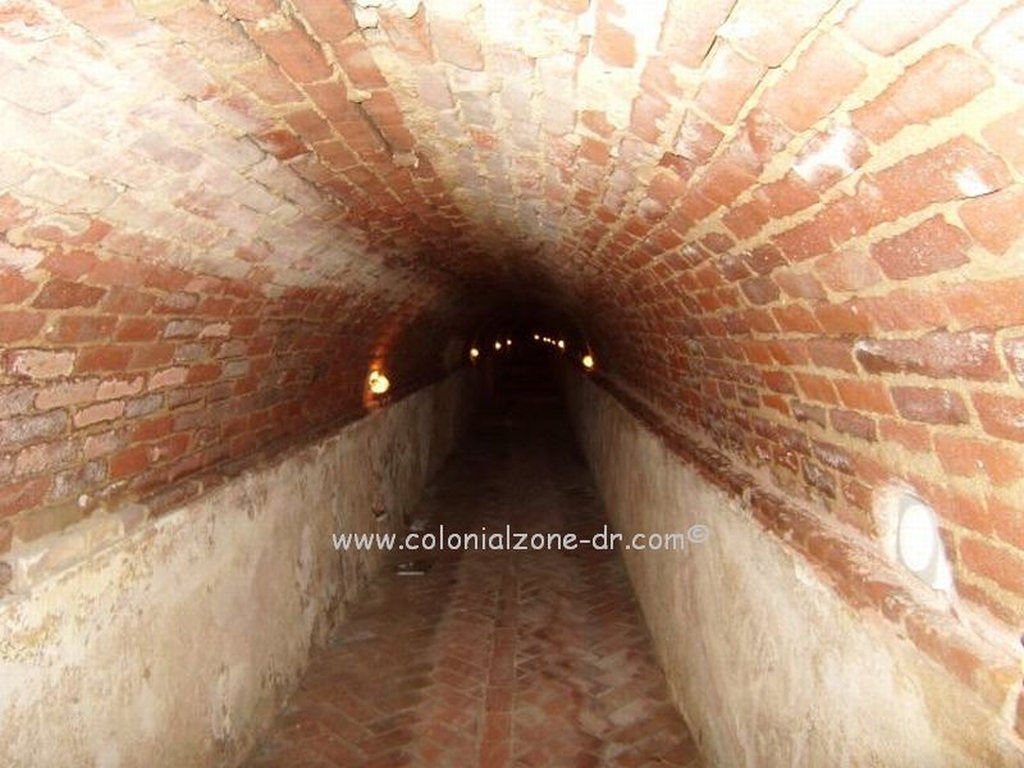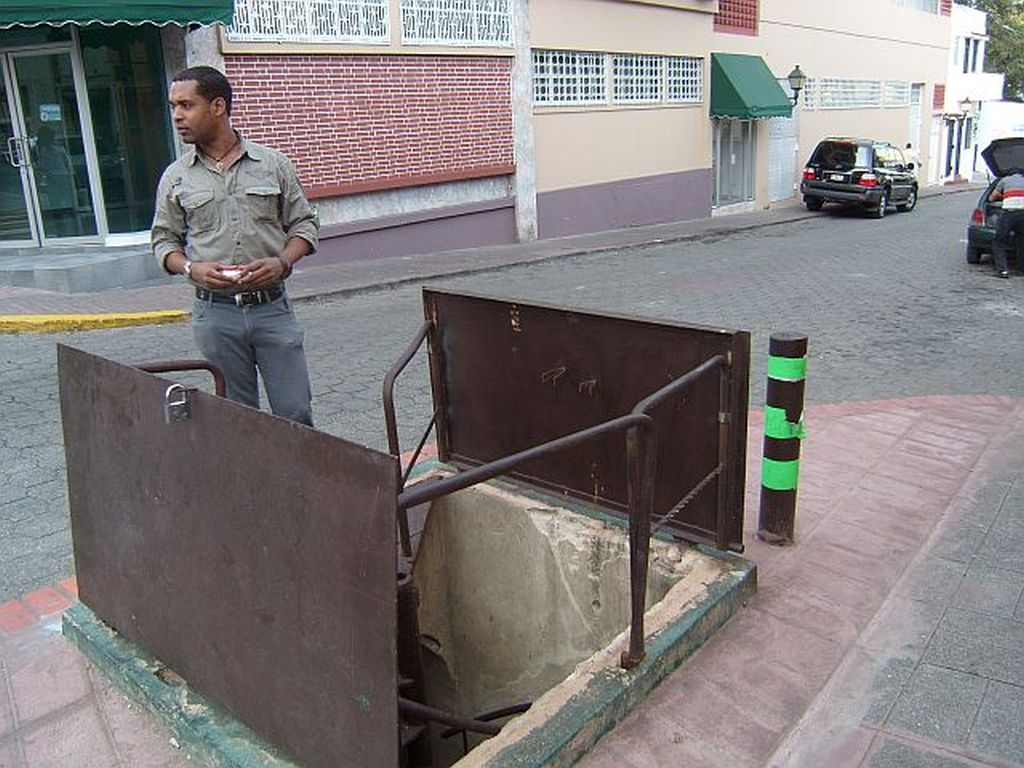Alcantarilla Colonial/ Colonial Culverts
Buried beneath the colonial city is a very important historical sight. The first hydraulic sewage system from the Colonial period. These culverts are one of the firsts of the Americas. It is a UNESCO World Heritage Site.
These culvert tunnels are said to have run from Calle Restauración to the Santo Domingo Port. The tunnels zig-zag under the streets, businesses and homes in the old part of the city of Santo Domingo. They were not only used to move debris but also humans, animals and military unseen and undercover throughout the city.
Some of these tunnel systems were used for military purposes. Moving items and men, unseen, from place to place. It is claimed that there was a human moving tunnel that went from Parque Independencia to the Cathedral of Santo Domingo.
I was told that there was once, and maybe still is, an operating tunnel that connects the Cardinals’ quarters across from the Casa de Sacramento to the Cathedral. This way the Cardinal does not need to cross the street and he can move easily from home to church.
Construction of the first culvert began in 1502. It was named la Alcantarilla de Ovando/ The Ovando Culvert. This was the works for the entire southern part of the city. The construction was very crude and all the waste dropped directly into the river.

See the complete picture collection slide show if the Alcantarilla Colonial.
Building the second part of this system started in combination with the construction of the Atarazanas (Shipyards) in 1509. This second underground line was named la Alcantarilla de Atarazanas. The second culvert was a bit more advanced in its construction. This new line was built to move sewage, mainly animal debris, and did not drop into the river like the first line did.

The culverts are constructed of brick and stone. There are a series of archways that, as the construction progressed, became more sophisticated. The changes in the way the tunnels were constructed are very noticeable.
Most of these UNESCO Historical Site tunnels have long ago collapsed or been destroyed because of city construction. There are a few that still remain intact. When they were doing the Colonial Zone renovation in 2014 some of these tunnels were discovered under the streets of the city. They were explored and conserved before they replaced the streets that cover these historical sites.

See the complete picture collection slide show if the Alcantarilla Colonial.
Location
One of these tunnels has been kept up so people can see and walk through a small section. The entrance to this culvert underground tunnel is located outside of the Museo del Ron y la Caña. It is on Isabel la Católica street turning north from Colon Park. You need to ask inside the Museum about visiting the site.

